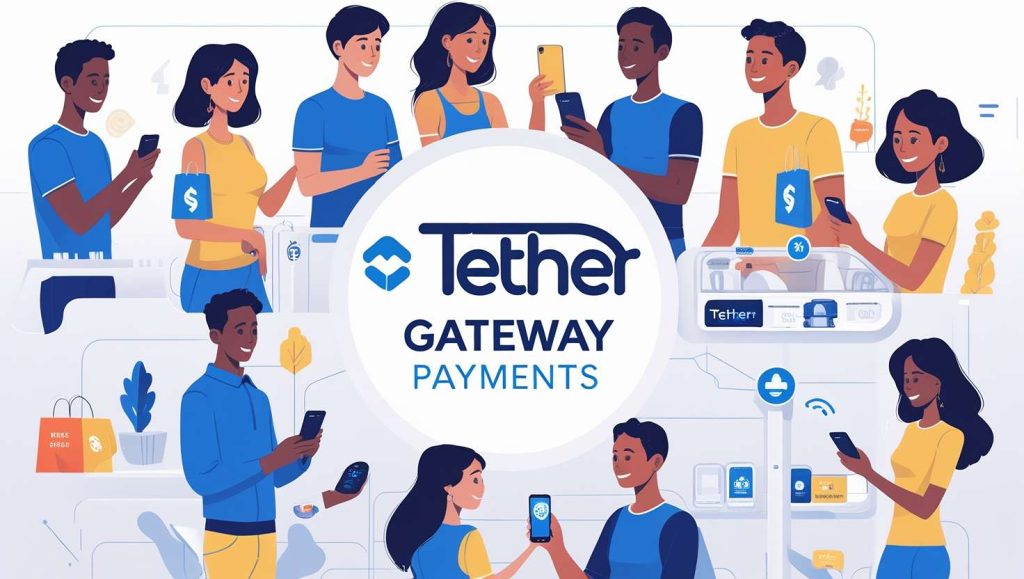In the rapidly evolving landscape of digital finance, stablecoins like Tether (USDT) have emerged as pivotal instruments bridging traditional financial systems with the burgeoning world of cryptocurrencies. Tether’s stability, pegged to the U.S. dollar, combined with its swift transaction capabilities, has made it a preferred choice for businesses and consumers alike. This article delves into the real-world applications of Tether gateway payments, highlighting how various industries leverage this technology to enhance operations, reduce costs, and expand their global reach.
Understanding Tether and Its Payment Gateways
What is Tether (USDT)?
Tether (USDT) is a type of stablecoin, a cryptocurrency designed to maintain a stable value by pegging it to a reserve asset—in this case, the U.S. dollar. Each USDT token is intended to be backed by one U.S. dollar, providing the benefits of digital currency transactions without the volatility typically associated with cryptocurrencies.
What is a Tether Payment Gateway?
A Tether payment gateway is a digital platform that facilitates the acceptance of USDT payments for goods and services. These gateways enable businesses to integrate USDT transactions into their payment systems, allowing for seamless, secure, and swift financial exchanges with customers worldwide.
Real-World Applications of Tether Gateway Payments
1. E-Commerce and Online Retail
Online retailers are increasingly adopting Tether payment gateways to cater to a global customer base. By accepting USDT, businesses can offer customers a stable and efficient payment method, eliminating concerns about currency conversion and transaction delays. This approach not only enhances customer satisfaction but also reduces transaction fees associated with traditional payment processors.
2. International Remittances
Tether provides a cost-effective and rapid solution for international money transfers. Individuals sending remittances can leverage USDT to bypass traditional banking systems, which often involve high fees and prolonged processing times. This is particularly beneficial in regions with limited access to banking infrastructure.
3. Freelancing and Remote Work Payments
The gig economy has seen a surge in freelancers and remote workers across the globe. Employers and clients utilize Tether payment gateways to compensate freelancers efficiently, ensuring timely payments without the complications of cross-border banking regulations and fees.
4. Real Estate Transactions
In the real estate sector, USDT is being used for property transactions, especially in markets where currency volatility is a concern. Buyers and sellers benefit from the stability of Tether, enabling secure and swift property deals without the need for traditional banking intermediaries.
5. Travel and Hospitality Industry
Travel agencies and hospitality providers are integrating Tether payment options to accommodate the growing number of crypto-savvy travelers. By accepting USDT, these businesses can attract a broader clientele, offering seamless booking experiences and reducing reliance on conventional payment systems.
6. Gaming and Digital Entertainment
The gaming industry leverages Tether for in-game purchases and rewards. USDT’s stability ensures that gamers can transact without worrying about fluctuating token values, enhancing the overall gaming experience and fostering a robust virtual economy.
7. Charitable Donations and Non-Profit Funding
Non-profit organizations are adopting Tether to receive donations, especially from international donors. USDT facilitates transparent and efficient fund transfers, ensuring that contributions reach their intended destinations promptly and in full.
Benefits of Implementing Tether Payment Gateways
Enhanced Transaction Speed
Tether transactions are processed swiftly, often within minutes, enabling businesses to maintain cash flow and meet operational demands without delay.
Reduced Transaction Costs
By bypassing traditional financial intermediaries, Tether payment gateways minimize transaction fees, allowing businesses to allocate more resources toward growth and development.
Global Accessibility
USDT’s digital nature ensures that businesses can engage with customers worldwide, breaking down geographical and financial barriers.
Financial Stability
The stable value of Tether mitigates the risks associated with cryptocurrency volatility, providing both businesses and customers with confidence in their transactions.
Pipcore’s Role in Facilitating Tether Payments
Pipcore offers advanced solutions for businesses seeking to integrate Tether payment gateways. With a focus on security, compliance, and user experience, Pipcore ensures that businesses can seamlessly adopt USDT transactions, benefiting from the myriad advantages of stablecoin integration.
Frequently Asked Questions (FAQs)
1. Is accepting Tether payments legal?
Yes, accepting Tether is legal in many jurisdictions. However, businesses should consult local regulations to ensure compliance with financial laws and reporting requirements.
2. How does Tether maintain its value?
Tether maintains its value by pegging each USDT token to a corresponding U.S. dollar held in reserve, ensuring price stability.
3. Can Tether transactions be reversed?
No, Tether transactions are irreversible once confirmed on the blockchain, reducing the risk of chargebacks for merchants.
4. What are the security measures for Tether payment gateways?
Reputable Tether payment gateways implement robust security protocols, including encryption, two-factor authentication, and compliance with anti-money laundering (AML) standards.
5. How can I integrate a Tether payment gateway into my business?
Businesses can partner with service providers like Pipcore to integrate Tether payment gateways, ensuring a seamless and secure setup tailored to their specific needs.








